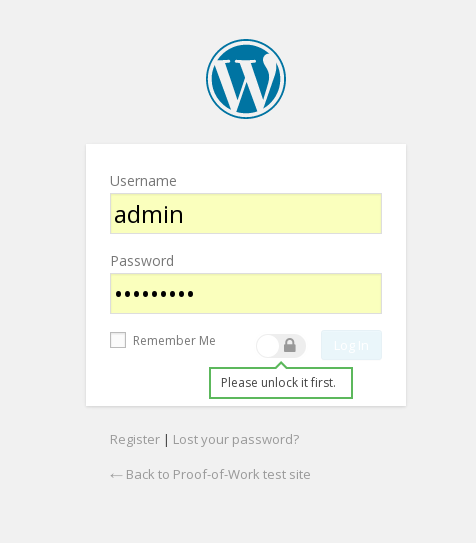Patience for CAPTCHAs is wearing thin these days. There’s nothing more annoying than being slowed down by a virtually illegible mess of letters and numbers. The audio CAPTCHAs are reminiscent of your worst nightmares and are even more baffling than the visual ones. Despite the fact that everyone groans inside when landing upon a CAPTCHA, many major websites continue to employ them, for lack of a better method, in the war against bots.
The folks at Hashcash.io have created a new way to keep bots and spammers at bay by forcing the user’s browser to solve math. This also helps to secure sites against brute force attacks. Hashcash utilizes open technologies including Asm.js, HTML5, and Web Workers to keep your login form under lockdown until the browser has solved the required math.
The Hashcash team created a WordPress plugin to help users get started quickly, not to be confused with the popular WP-Hashcash plugin. The plugin integrates Hashcash.IO service with login, registration, and comment forms. Here’s how it works:
The submit button is disabled until the user unlocks it.
A progress bar fills up while the browser is solving the math to unlock the button. It updates both visually and via WAI-ARIA to inform blind users via screen reader about the progress.
When the form is unlocked, it displays the green unlocked indicator:
Supported browsers include:
- Google Chrome 28+
- Mozilla Firefox 22+
- Internet Explorer 10+
- Opera 18+
You can test out Hashcash in operation on the live WordPress demo where it is active on login, comment and registration screens. The plugin is fully accessible and follows both common sense and accessibility guidelines and is focusable and actionable via Tab-Enter keys.
After installing Hashcash, you will need to enter public and private keys for the service from the Hashcash.io website in the settings page. Here you can also adjust the complexity value, which determines how much work is required from the browser to unlock the submit button.
Ultimately, the team at Hashcash plans to allow you to make some cash while stopping spammers, but the cash feature is still in development. We’ll keep you updated on where that goes. If you’d rather have your browser solve math instead of forcing yourself to squint at a CAPTCHA, download the free WordPress.org-approved Hashcash plugin via your site’s admin panel.




I don’t know if it’s this plugin in particular or just my really crappy Internet connection, but this is impossibly slow for me. It takes between 7 and 14 seconds for the “unlock” to go through after clicking it. I could see using it on a personal site if I didn’t mind the wait, but I wouldn’t want to subject my users to this wait time on a site with multiple users.